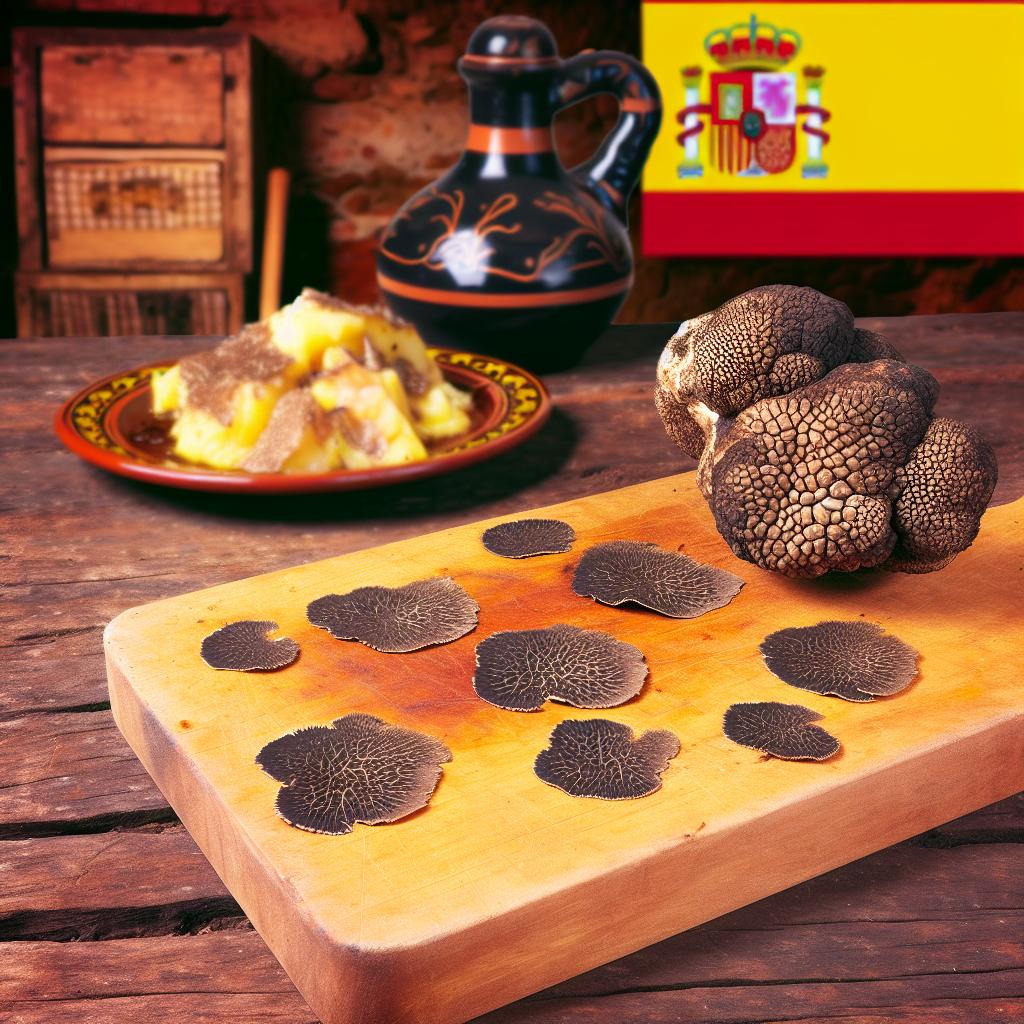
In recent years, black truffles, particularly the Tuber melanosporum, have become an integral part of Spanish cuisine. This renowned delicacy, often referred to as the “black diamond” of the culinary world, is prized for its unique flavor and aromatic depth. The intriguing aroma and taste profile of black truffles, combined with their rarity, contribute significantly to their esteemed status in gourmet circles.
While truffles have been incorporated into European cooking for centuries, it wasn’t until the late 20th century that Spain recognized their culinary potential. Historically overshadowed by France and Italy, two countries traditionally associated with truffles, Spain has made significant strides in truffle cultivation. Exploiting its suitable climate and rich, calcareous soil, Spain has positioned itself as a formidable competitor in the truffle market. As a result, Spanish black truffles have gained international recognition for their quality and intensity.
The historical journey of black truffles in Spain is intriguing. Initially, Spanish truffles were not at the forefront of either local or international markets. However, as culinary curiosity grew and global cuisines started overlapping, Spanish chefs began to explore indigenous ingredients more thoroughly. This included a renewed interest in truffles. With determined efforts to nurture domestic truffle varieties and improve cultivation techniques, Spain gradually emerged as a serious player in the truffle industry. As local knowledge and appreciation of the truffle grew, so did international interest, eventually putting Spanish black truffles on the gourmet map.
Truffles are versatile, enhancing both simple and complex dishes. In Spanish gastronomy, they are used to elevate traditional dishes. What makes them particularly attractive to chefs is their ability to impart a distinct, earthy flavor to a broad range of dishes. They can be shaved over eggs, a common way to enjoy the pure essence of truffles, or infused into oils to create aromatic dressings. When incorporated into creamy sauces, truffles add a depth of flavor that is unmatched.
Their earthy flavor blends beautifully with meats, such as pork or rabbit, often featuring prominently in hearty winter dishes. Truffles are also a unique addition to rice dishes, such as the famous Spanish paella. By including truffles, chefs can take on classic Spanish dishes and elevate them to a gourmet status.
Beyond these traditional applications, modern Spanish chefs are experimenting with truffles in innovative ways to cater to evolving palates. For example, truffles are now being used in tapas, subtly gracing small plates with their rich aroma. They are also being paired with unexpected partners, such as chocolate, to produce unique desserts. This experimentation showcases the culinary adaptability of truffles and their potential to continuously revolutionize dishes.
The cultivation of black truffles has become an essential industry in certain regions of Spain, particularly in the provinces of Teruel, Huesca, and Soria. These areas have not only ideal conditions for growing truffles but have also developed robust practices in truffle cultivation.
The economic implications of this industry have been profound. In addition to providing employment opportunities, the truffle industry has invigorated other sectors, such as tourism. The truffle hunting season, for instance, attracts food enthusiasts from all over the world who are eager to participate in hunts and savor fresh local truffles. This influx of tourists provides substantial benefits to local economies, from hospitality to retail sectors.
Furthermore, the international demand for black truffles has allowed these regions to export globally, adding another layer of economic enhancement. The prices that truffles can command on the international market mean that they are a lucrative crop for Spanish farmers, providing a financial incentive that encourages further investment in the industry.
While black truffles have brought economic benefits to Spain, the industry faces significant challenges. One primary concern is climate change, which poses a threat to truffle growth. These fungi require specific environmental conditions such as particular soil moisture levels and temperatures. Climate variability can disrupt these conditions, leading to reduced yields.
Moreover, sustainable farming practices are necessary to ensure the long-term viability of truffle cultivation. Overharvesting and improper agricultural techniques can degrade the soil and diminish future truffle harvests. Recognizing these challenges, there is an increasing focus on research and development within the field. Spanish farmers and agricultural researchers are working collaboratively to adopt sustainable techniques that protect the environment while still meeting commercial objectives.
Investing in research and adopting sustainable farming techniques are crucial for maintaining Spain’s position in the truffle market. Practices such as crop rotation, maintaining soil health, and using organic farming methods are being emphasized. These methods help to create a sustainable truffle industry that can thrive amid changing environmental conditions.
For more information on the impact of black truffles on Spanish cuisine and economy, you can explore resources from reputable culinary institutes and agricultural studies online, such as those provided by the Culinary Institute of America and other research institutions focused on sustainable agriculture.
Through continuous innovation and dedication, Spain aims to cement its status as a leading producer of black truffles, enriching its national cuisine and contributing to its cultural and economic fabric. By prioritizing both environmental sustainability and culinary excellence, Spain is adeptly navigating both the opportunities and the challenges of this dynamic industry. This trajectory promises not only to enhance Spain’s culinary offerings but also to sustain the economic and cultural vitality of its truffle-producing regions.